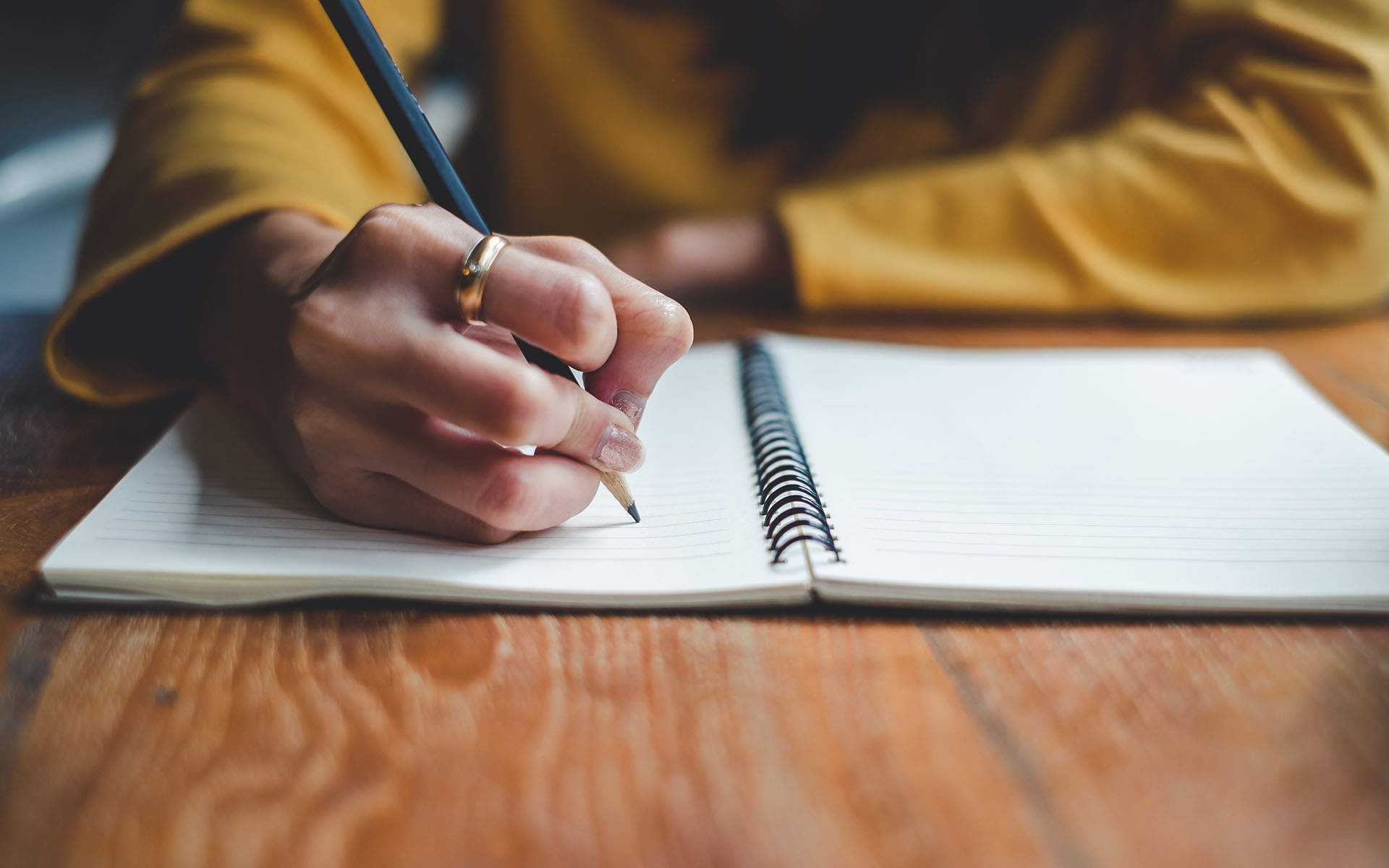Journaling has been around for decades as a way of writing our thoughts, keeping track of events, or simply jotting down memories so we don’t forget. Scientific studies have shown that journaling is a powerful tool to foster and promote resilience, increase motivation and self-awareness, and achieve mindfulness. It allows us to be in the present moment, work through difficult emotions, gently acknowledge our feelings, and gain the clarity to make rational decisions.
When I became a social worker, I asked all of my clients to write down their feelings, thoughts, and emotions. I knew the benefits associated with journaling, but very rarely could I get them to actually do it. I noticed that even though some of my clients knew about journaling, they thought of it as writing in a diary, something only children or younger people use. Meanwhile, those who were open to the idea reported feeling intimidated by the process and often asked how to start journaling. I decided to embark on my own journaling challenge to find ways that my clients could practice journaling, come to enjoy it, and experience the benefits associated with it.
Journaling is not one-size-fits-all, and there are multiple ways we can connect with ourselves and deepen our mindfulness practice through journaling.
Once I started, I realized that writing things down is not as easy as it sounds. I had to find what worked for me. The challenge helped me to understand that journaling is not one-size-fits-all, and that there are multiple ways we can connect with ourselves and deepen our mindfulness practice through journaling.
7 Ways to Explore Mindful Journaling
The following are a few writing exercises that I found beneficial during my journaling journey, and that I like to recommend to my clients:
- Write your personal story. When I decided to write about myself, I didn’t know what to expect. I found that writing about me, my obstacles and accomplishments as an immigrant, helped me increase my self-awareness. I was able to be kind and gentle to myself. I was reminded of who I have become and what I have achieved, despite adversity and the challenges I faced. If you are new to journaling, writing your personal story is a great place to start.
- Break down your bigger goals. This practice is an excellent way to stay present while still looking toward the future. When writing our intentions or goals, we want to focus on what we wish to see for ourselves and the steps needed to take us there. The practice of writing out smaller goals or steps is what helps you stay in the moment and attentive to what is happening within you. As we write, we want to ask ourselves: “How does this goal or intention make me feel?” so that we intentionally bring attention to our emotions and work through them. This emotional clarity frees up energy to help us achieve what we set out for ourselves.
- Keep a gratitude journal. This type of journaling can help us see the positive side of things, especially in situations where we are faced with constant negative thoughts. In general, making gratitude a part of our life offers numerous research-supported benefits, and gratitude journaling is a great way to experience them. By writing about what we are grateful for, we bring positive thoughts to our minds, which in turn increases our self-confidence, self-love, and self-esteem.
- Try your hand at artistic journaling. If writing isn’t your thing—which is sometimes true for me—expressing yourself through doodling, coloring, magazine cut-out collage, or another visual or tactile art form is an excellent way to adapt your journaling practice and to express creativity through a mindful lens. I was impressed by how beneficial this practice was. It helped me clear my mind when I wasn’t able to give words to my feelings, especially if my mind was clogged with negative thoughts.
- Untangle your thoughts through journaling prompts. A lot of times, our mind is so overwhelmed that we don’t know how to begin to express what we are feeling. Prompts such as “What am I thinking right now?” or “How does my body feel when I think this?” are an excellent way to help us open our mind and intentionally work through the thoughts or feelings we’re experiencing. Here are some simple prompts to explore for yourself.
- Go inward with reflective writing. We might think of this as the “Dear Diary” form of journal writing, with some intentional mindfulness added. With this technique, we write down things that happened during the day, how we felt, how our body felt, what we were thinking or how we reacted to situations. This form of journaling helps us listen to our inner dialogue, processing emotions and situations. Importantly, this kind of journaling doesn’t need to happen every single day. During my journaling challenge, there were days that I didn’t have the time to write, but whenever I needed to express how I was feeling, my journal was there for me. This type of journaling also doesn’t have to be all about negative situations. It is important to also highlight positive events and how we felt or reacted during those moments.
- Release stressful emotions with a “word dump.” This practice was the one I found most useful for stress relief. Word dump is exactly what it sounds like: writing out anything and everything that comes to mind. There is no logic behind it. This was very beneficial for me during moments of rage, anger, or crying spells. I found this kind of writing to be excellent in reducing self-judgment and increasing calmness.
The Last Word on Journaling: Find What Works For You
Although daily journaling is encouraged, it’s not required in order to be effective. Any frequency in journaling, whether daily, weekly or as needed, is still beneficial. Your journaling practice can also be a combination of all of the above forms. I learned that artistic, word dump, and reflective journaling worked best for me.
Journaling looks and feels different for everyone, and that’s OK. There isn’t one set rule to follow. No matter the form you use or the way in which you put down your thoughts, feelings, or experiences, journaling can support you in bringing awareness to the present moment and calming your mind. Through cultivating a form of self-expression that’s free of judgment, mindful journaling allows us to appreciate moments of insight and be kind to ourselves when things get chaotic or challenging. I hope that your writing practice helps you recharge, in order to face and overcome adversities with clarity.
read more
Getting Started with Mindful Writing
Mindful writing can lead you on the path of inner discovery. It can be the place where your experience meets your mindfulness practice, a place to encounter the twists and turns of your emotional life—and a bit of solid ground to stand on.
Read More
How Writing Three Lines of Poetry Can Open Your Heart
Poetry can be a kind of meditation, explains Rashid Hughes. He explores how the art of haiku can bring a sense of peaceful, awe-inspired expressiveness into your practice.
Read More
Try This Guided Meditation As a Mindful Writing Prompt
The invitation is to connect with your senses in a real or imagined setting. What do you hear? What do you smell? Note the emotional content of the space. And when you’re done, take what you learned to the page in whatever way suits you.
Read More









